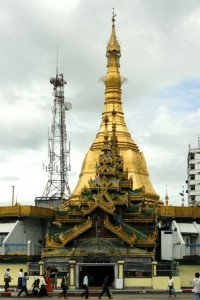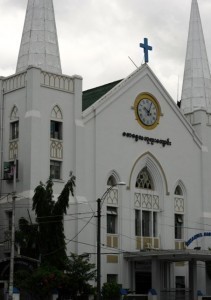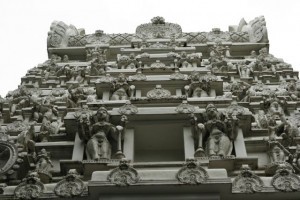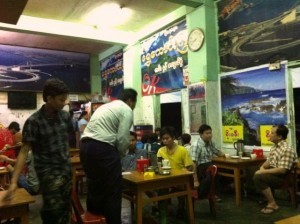Apologies for the Silence – Yangon, Myanmar
 I’ve been traveling. After years and years of contemplating whether it was ethical to visit Myanmar (or Burma), and after it became even possible to get a visa arranged to visit the country from Ho Chi Minh City, I decided to go.
I’ve been traveling. After years and years of contemplating whether it was ethical to visit Myanmar (or Burma), and after it became even possible to get a visa arranged to visit the country from Ho Chi Minh City, I decided to go.
Like Vietnam, Burma was also a colony. It was colonized by the English, instead of the French (like Vietnam, Laos and Cambodia) and it reflects both its colonial heritage and its struggle to independence. And Yangon, like Ho Chi Minh City, has a love-hate relationship with its history. But unlike Saigon, Yangon – probably through lack of inward investment and globalization – has kept a lot of its colonial architecture. I suspect out of sheer necessity.
 Yangon is immensely more spread out. The city blocks are huge. Parts of the city, close to the port, are massively populated and tightly packed. But most of it is made up of massive garden estates with single, enormous houses on them. Many of them turned to educational or administrational purposes. It was only when I took the Yangon Circular train (which surrounds the whole city and takes 3 hours to circumnavigate) that I got to see where most Yangonese live; in little bunched village-like hamlets interspersed with industrial areas.
Yangon is immensely more spread out. The city blocks are huge. Parts of the city, close to the port, are massively populated and tightly packed. But most of it is made up of massive garden estates with single, enormous houses on them. Many of them turned to educational or administrational purposes. It was only when I took the Yangon Circular train (which surrounds the whole city and takes 3 hours to circumnavigate) that I got to see where most Yangonese live; in little bunched village-like hamlets interspersed with industrial areas.
On similar latitudes, it has pretty much the same weather. Now it’s the rainy season, so there are torrential afternoon showers. The buildings bear the marks of the heat, the humidity and the rain.
Another difference in Yangon is the diversity of cultures and religions. Vietnam is, for the most part a Buddhist country with a small but robust Catholic minority. Myanmar is predominantly Buddhist, but it has sizable Christian, Muslim and Hindu minorities, all of which are represented in their houses of worship. Within a single 300 meter area there is:

The Sule Pagoda

Across the street, a large mosque

One block from a Methodist church

and down the street, a Hindu temple
This is reflected in the diversity of faces you see on the street. I found this one of the most pleasing of all aspects of Yangon. Saigon, for all its many charms, in much more homogenous.
Instead of the ubiquitous coffee stalls of Vietnam, the Burmese are tea fanatics. I came to learn that tea houses are somewhat frowned upon as places where lazy men waste their days. But if you tasted the tea, you’d know why they never leave.

It’s made with very coarsely cut black tea leaves, steeped for what tastes like hours and served with a dollop of canned milk.
 If you are thinking of traveling somewhere new, consider coming to Myanmar. Their tourist industry is nascent, so don’t expect things to go exactly as planned. They have rickety internet and the odd power outage. But countries are not about their buildings or their amenities. What makes for a great place to travel is the people. I was warned by someone that I’d fall in love with Burma and the Burmese, and I have. I haven’t had a single unpleasant or even cold interchange since I’ve been here. People are open, friendly, and almost overwhelmingly eager to engage you, no matter whether they speak your language or not.
If you are thinking of traveling somewhere new, consider coming to Myanmar. Their tourist industry is nascent, so don’t expect things to go exactly as planned. They have rickety internet and the odd power outage. But countries are not about their buildings or their amenities. What makes for a great place to travel is the people. I was warned by someone that I’d fall in love with Burma and the Burmese, and I have. I haven’t had a single unpleasant or even cold interchange since I’ve been here. People are open, friendly, and almost overwhelmingly eager to engage you, no matter whether they speak your language or not.
A couple of things to keep in mind: never pat anyone on the head in Burma, not even a child – it’s incredibly rude. Also, everyone kicks their sandals off here at the drop of a hat, but never, ever point the soles of your feet at anyone, or at any religious iconography. Like most Buddhist cultures, there is a lot of same-sex physical contact, but don’t touch a person of the opposite sex unless it’s obvious it’s welcomed. It’s not in the least bit a gender-separated society, but it is a polite one.






